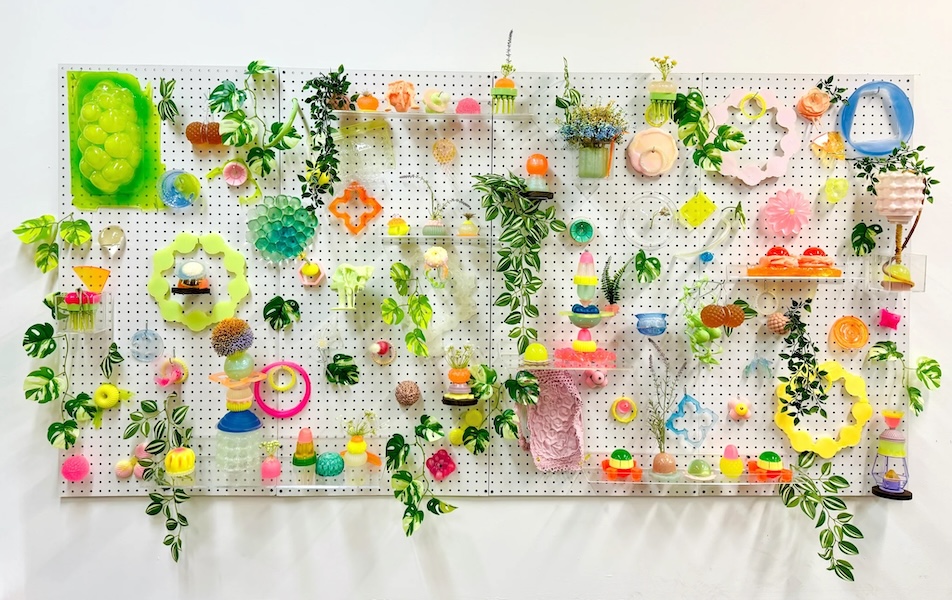We had settled on noon. “But your time.” Sebastien Leon emphasized the EST.
His call was only a little late. Still, I could hear the concern in his voice. “I am so sorry—I think—I am still getting used to the time difference. (Leon relocated to Los Angeles. That was two years ago. Still, there’s the Pacific Standard time warp to contend with).
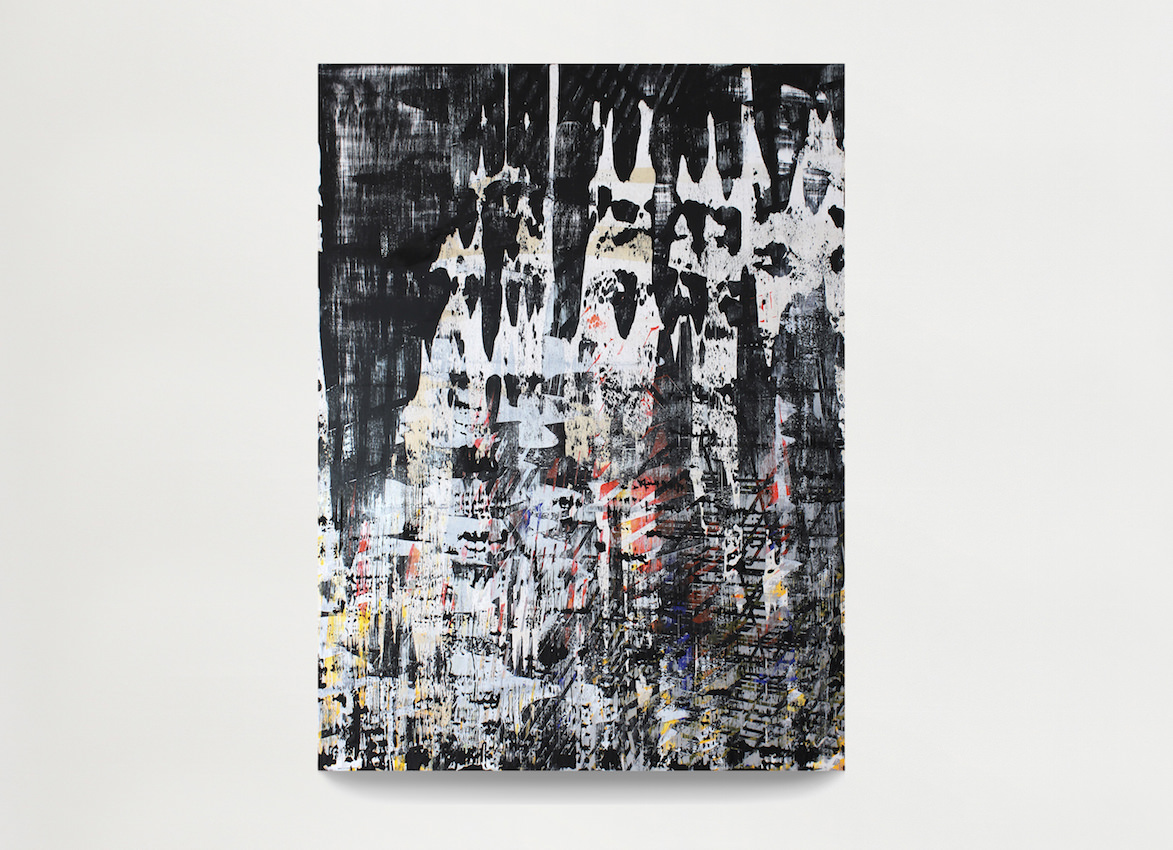
Sebastien Leon, The Inquisitors, 2016, Acrylic and Tap on Wood Panel, 18 x 24 inches, courtesy of the artist
Leon isn’t one to rush or to be rushed. In an era when creativity is in large part self-promotion, artists are adapting to the hyperactivity of capital: its booms and busts. (We are all frogs acclimatizing to the rise of neoliberalism). Nonetheless, Leon has managed to maintain a quiet and steady art practice on the fringe of any ersatz scene. There’s a recent picture of him scaling Horseshoe Bend, the Colorado River hundreds of feet below. “On my way to Miami,” he announces.
Leon is best described as a lone wolf. A peripatetic artist from Orleans, France, he has a history of uncovering and trumpeting patterns; he’ll synthesize materials, sites, and sounds by tuning into the humdrum of his everyday surroundings. Whatever thoughtfulness pervades his art practice carries over into our phone call. He tends to let the form of any flat question take on a kaleidoscopic shape. We talked at length about West Coast sequoias and the polychromatic food markets in Tel Aviv before getting around to his career.
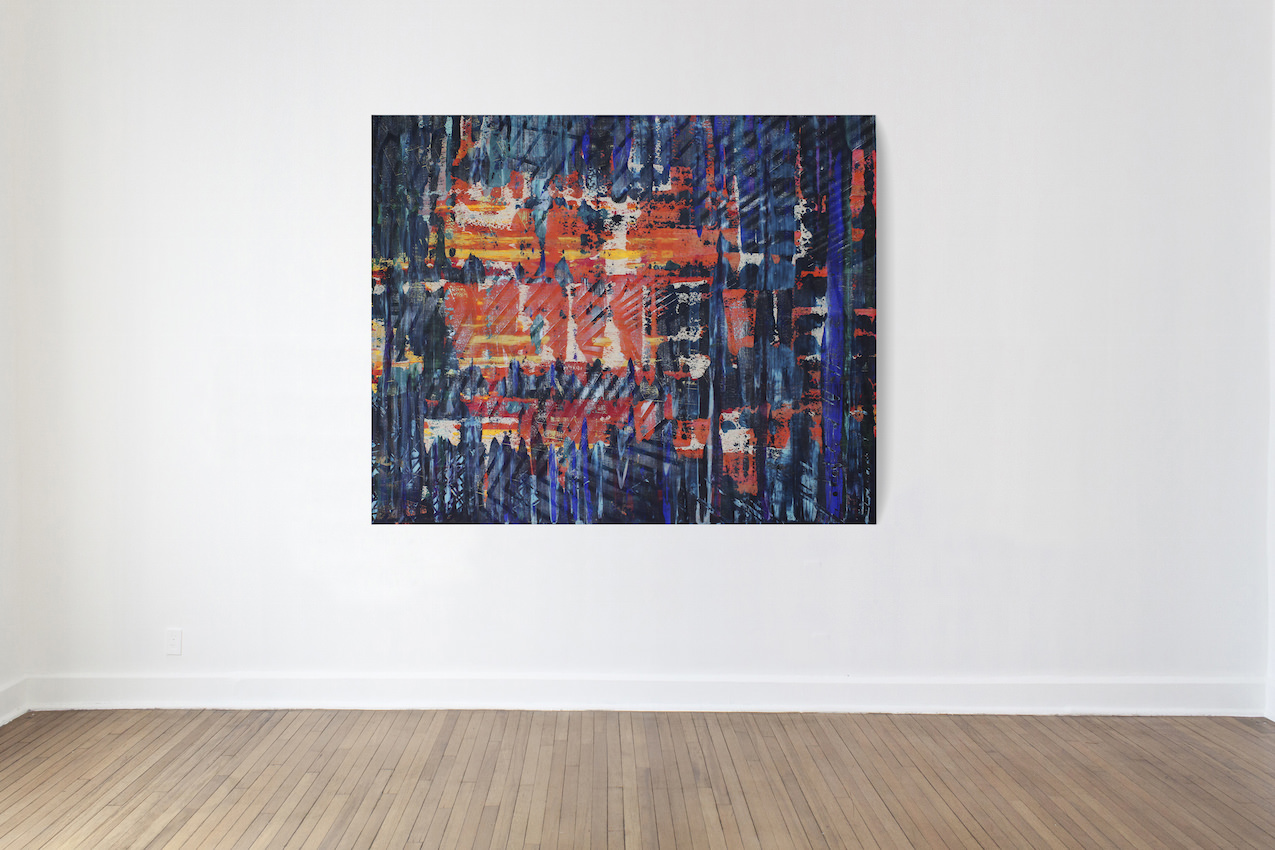
Sebastien Leon, Yes, 2017, Acrylic on Wood Panel, 60 x 48 inches, courtesy of the artist
Numbers scaffold Leon’s work. It made sense to hear that he left home at 17 to study mathematics. His first job was with the French trade commission in South Korea. He would go on to receive an MBA from Bocconi University in Milan. To this day, he is particularly poised to understand how algorithms (digitized currents really) give physical shape to our world. He quickly left the finance world and never looked back, uncovering his daily inspiration from the stolid, industrial refinement of Milanese design. After working internationally as a marketing executive “for perfumes,” (his way of pronouncing the word triggers your olfactory sense), Leon relocated to the Lower East Side of Manhattan. This was in the late 90s and early 2000s. He and two friends (an architect and painter) found an apartment to rent, only to convert their living room into a gallery space. (“We used furniture that would fold back into the walls.”) They referred to it as “The Point.” It eventually morphed into his own creative agency, Formavision.
Leon’s recent turn to painting falls in the wake of his successes as a sculptor, sound, and interior designer. His hybrid sound and sculpture installations have popped up in Paris, Milan, Istanbul, Guangzhou, and on Park Avenue. He’ll often turn a corporate commission (past clients include Krug, Audemars Piguet, and Audi) into opportunities to collaborate with sound artists he reveres. Preferring to redirect public attention towards the site specifics of his work, heincorporates local materials (whether the bent pipes ubiquitous to Istanbul, or the gridded asphalt streets of Manhattan). When Audi commissioned Leon to fabricate an interactive environment on Haixinsha Island in 2014, he used helium filled balloons to reflect the mirage of industry and the fragility of our climate.
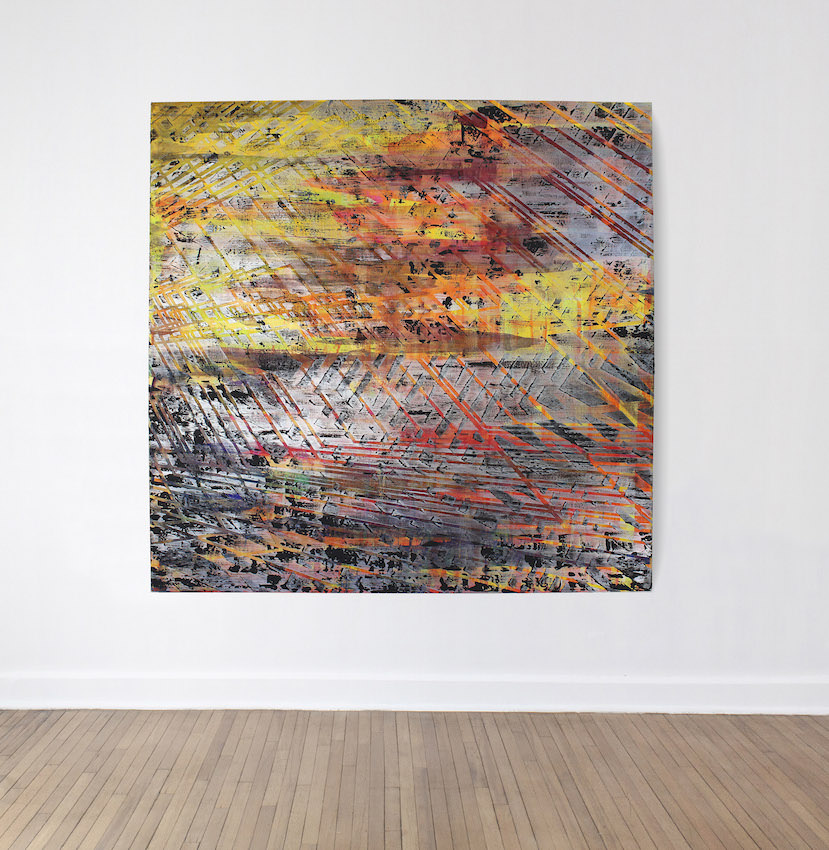
Sebastien Leon, The Sunset Strip 1, 2016, Acrylic, Pastel and Tar on Canvas, 60 x 60 inches, courtesy of the artist
Leon’s poetic interactivity with the natural world informs every aspect of his multidisciplinary practice. If you scroll through his Instagram (because, well, that’s mainly how we get to know each other these days), his photographs point out the floor-play of light and shadow. He’ll excerpt rock sedimentation in various state parks, obsess over the way water tattoos sand and bark. Natural play and its resulting geologic marks pervade his art.
In addition to sound and sculpture, Leon is the design director for Atelier D’Amis (his latest furniture line references New York construction sites). Oh, and he’s also a recording artist. He often collaborates with the Tibetan scholar Kaia Fischer of the rock band Rainer Maria. They recently rolled up the steel shutters of the Solivagant gallery on the Lower East Side. Turning themselves out onto the street, the two musicians held an impromptu concert for any passerby who was there to listen.
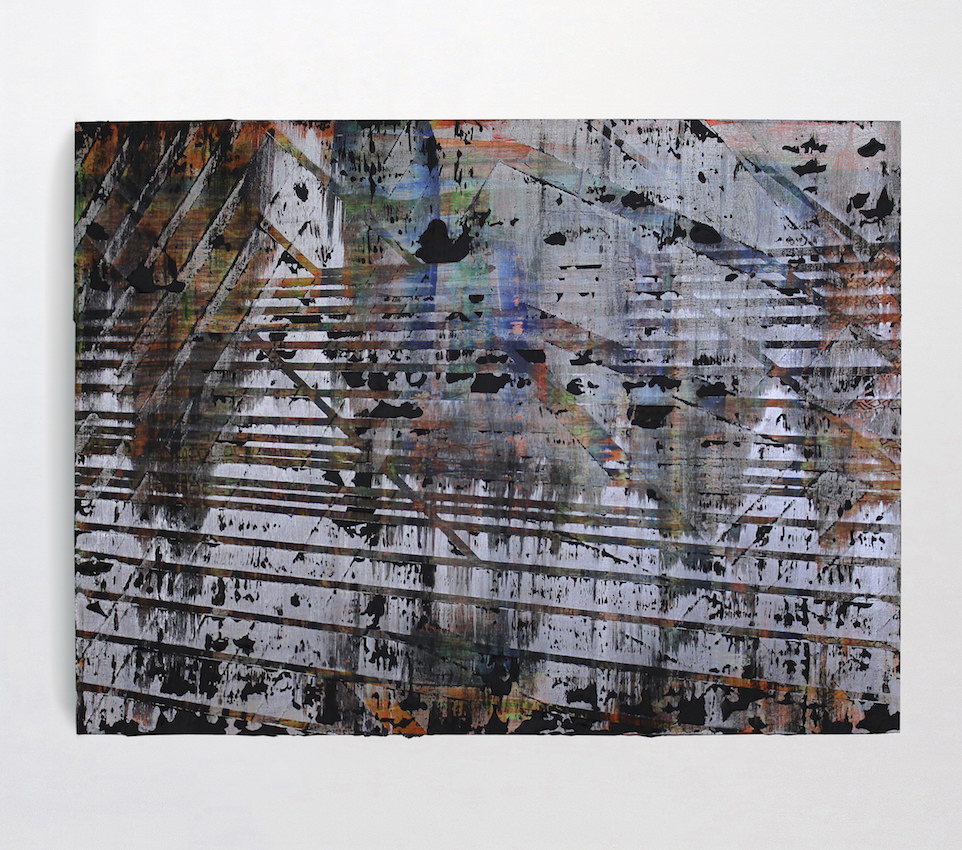
Sebastien Leon, Sunset Rain, 2016, Acrylic and Tar on Wood Panel, 18 x 24 inches, courtesy of the artist
Leon’s shift into painting marks a transitional phase in his career. He’s based in Los Angeles now. “There’s a rhythm here—a different quality of space and time,” he said. As a self proclaimed Americanophile, he can wear a wide brimmed hat as if he were the Waco Kid. We talked extensively about West coast light. He’s been traveling around the state of California, recalibrating his sense of scale and perspective by visiting its gargantuan parks. He doesn’t call himself a painter. It just happens to be the next step for him: a way to give “physical form to time.” Over the past three years, Leon has developed an eccentric painting practice all his own. Guided by geometric scripture and the play of chance, he uses tarot cards to settle on a color palette. As he paints, he’ll intermittently pull three new cards to redirect form. He uses 3D software to algorithmically generate a set of stark lines, which he then projects onto a wood panel. He’ll use strips of tape to mark out and transfer the algorithm onto a flat surface (you can’t help thinking of Barnett Newman here: how tape can guard a wisp of negative space). Next, he dialogues with the flat support itself. He lets the wood panel’s veins (or any of its innate marks) guide the content of the painting. Rotating the panel 90 degrees, Leon will repeatedly offset the verticality of his work. He meticulously builds up an abstracted pseudo-scape through layers of acrylic paint, all the while preserving the minimal scaffold of his three-dimensional algorithms. His mixed point perspective (outside of any one human body) induces a visual kinesis. Leon paints time as a shifting architecture. His vision is entirely stereoscopic. When you stand in front of one of his paintings, there’s a cascade of associations: photogrammetry, aerial landscape art, Italian Futurism, Russian Constructivism, the geometry of Frank Stella, the International Space Station photographs, select wood prints of Edvard Munch, the song lines of Australian Aboriginal art, a lineage of cosmigraphics from ancient Egypt to the literati of premodern Asia, a whole generation of West Coast artists who said “Yes!” to color.
“When I was five,” described Leon in his distinct, French lilt, “my vision got fucked up.” Coming down from a freakishly high fever, “It must have been food poisoning, or something,” he watched what appeared to be his solid world disintegrate into shapes and patterns. A neighbor later encouraged him to drop by his woodshop. Instructed to pick any wood scraps he might like, the younger Leon turned it into an associative game. He searched for the patterns he’d seen in his feverish daze. This jeu—of recovering perspective by losing it through geologic shapes and cosmic time—is the distinct solace of Leon’s paintings.
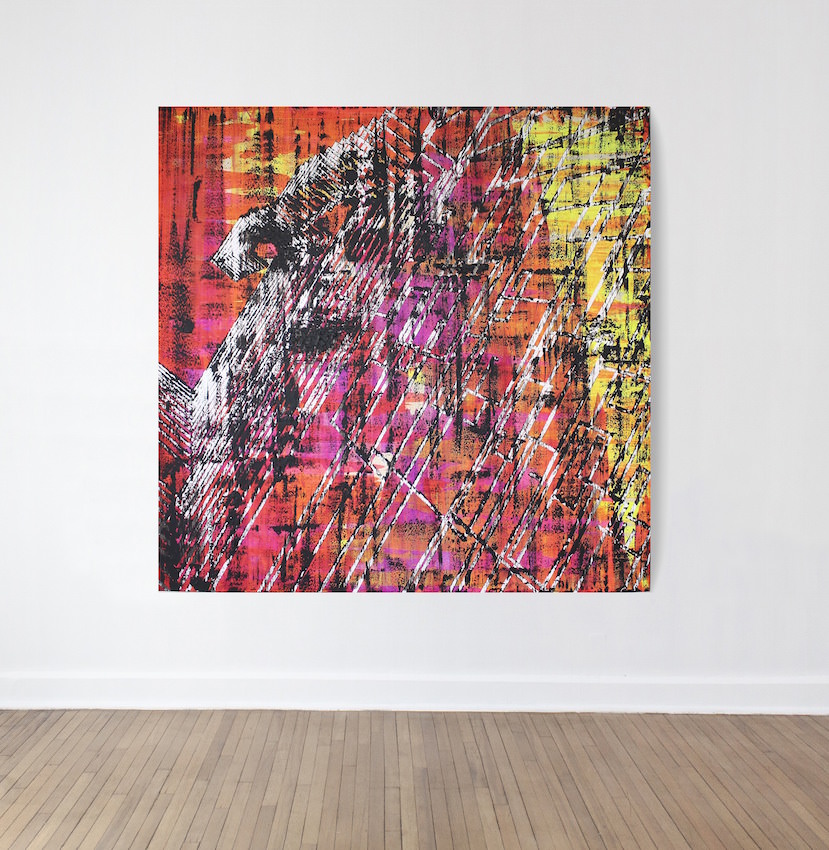
Sebastien Leon, Mother Tower, 2016, Acrylic, Tape and Tar on Wood Panel, 60 x 60 inches, courtesy of the artist






